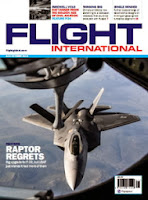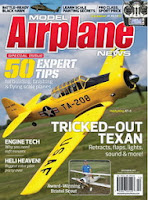World War I aircraft are fascinating subjects featuring an endless array of colorful markings. After a long period when there were only a few large-scale WWI aircraft kits, recent years have seen dozens of new releases, including several from new manufacturers such as Wingnut Wings. One of Wingnut s first releases was a 1/32 scale Albatros D.Va, and with an enormous variety of paint schemes to choose from, and the stunning quality of the kit, it immediately went to the top of my list of "must-do" projects. I decided to model a black aircraft with five-color lozenge on the wings from Jasta 37, flown by Lt. Gerhard Schreiber. The kit doesn't come with lozenge decals, so I used decals from Wingnut Wings'LVG. (I'll build that model as the prototype with painted wings.) Wingnut Wings now offers separate lozenge decals for the D.Va. WWI aircraft modelers express two major concerns — rigging and getting plastic to look like wood. Rigging is tedious, but not so difficult that an average builder can't learn it. Believable wood grain is another story. I cut the interior parts from the sprue and airbrushed them with Gunze Sangyo sandy yellow (H79), 1. A coat of Pledge Future floor polish followed. Then I let the parts dry overnight. Using a cotton swab, I applied a dab of burnt sienna oil paint and spread it over the area, 2.Then I used a flat, dry brush to remove most of the oil, working the paint in one direction and leaving a streaked appearance to simulate wood grain, 3.I allowed the parts to dry for 24 hours before applying another coat of Future. A burnt umber acrylic wash brought out details.
Sunday, October 6, 2013
Flight International October 8, 2013
The US Department of Defense has finalised a deal to buy a combined 71 F-35s from Lockheed Martin through the Joint Strike Fighter programme's sixth and seventh low-rate initial production (LRIP) lots. Covering the manufacture of 36 aircraft for S4.4 billion, the LRIP 6 deal includes 23 conventional take-off and landing F-35As for S103 million each; seven carrier-variant F-35Cs, each worth S120 million; and six short take-off and vertical landing F-35Bs, for S109 million each. The average aircraft unit cost is approximately 2.5% lower than in LRIP 5, the US government and Lockheed say in a joint statement. Worth S3.4 billion for 35 aircraft, the LRIP 7 order comprises 24 F-35As, seven F-35Bs and four F-35Cs. Both deals exclude the cost of F135 engines, which will be the subject of a separate contract with Pratt & Whitney. Lockheed will be responsible for covering any cost overruns incurred during the two future production lots, deliveries from which will start in the second quarters of 2014 and 2015,respectively. Any returns reported below the agreed price will be shared at a ratio of 80% to the government and 20% to Lockheed.
Model Airplane News 12/2013
The North American AT-6 Texan is one of the most well-known advanced trainer aircraft used during WW II. Often referred to as "the Pilot Maker" it was used by several countries well into the 1950s and during the Korean War. It was rugged and designed to prepare student pilots for more demanding, higher performance fighter aircraft. It was by no means an easy aircraft to fly but, it still remains a very popular and iconic warbird aircraft used for airshows and at the Reno Air Races. The AT-6 from HobbyKing is a nicely detailed scale warbird molded from durable EPO foam. With its later model all-yellow paint job, it has an exciting and attractive look both on the ground and in the air. If you are looking for a round engine warbird, you can't go wrong with this advanced trainer classic. With its relatively small wheels and retractable landing gear, you want to operate the Texan from a maintained flying field with short grass or a paved runway. There's ample thrust with the included scale propeller and bullet spinner set and a 2200mAh 3S LiPo pack provides excellent flight performance.
Battle of Britain - 70th Anniversary Special Souvenir Issue
On October 8, 1940 Supermarine Spitfire I X4590 was taken on charge by 609 (West Riding) Squadron at Middle Wallop in Hampshire. The unit codes 'PR-' were painted on its flanks, as was the individual letter 'F-for-Freddie'. Two days later 23-year-old Pit Off S J Hill took it up for very probably its first operation - an uneventful patrol lasting 70 minutes. Pit Off Hill was again at the helm of 'PR-F on the 11th, 12th and 14th. Using the call-sign Red 2, Hill was airborne in X4590 over Portland on the 21st when he took part in a low-level chase after Junkers Ju 88A-5 8116 '9K+BH' of I/KG5I,which was returning from a raid on Old Sarum,Wiltshire. Hit several times, the twin-engined bomber impacted at Milford on Sea, killing all four on board. Red 2 was awarded half of the 'kill' and the Ju 88 had become 609's 100th enemy aircraft claim. Four days later, Pit Off J Churchin was flying X4590. Upon return to Middle Wallop, the landing was more abrupt than planned. Churchin had left the undercarriage in the 'up' position; thankfully only his pride took a knock. 'F-for-Freddie' was repaired and back in the fight with 609 on November 15, but there we shall leave it as the Battle of Britain was over and won. Spitfire I X4590 flew on with various units until it was allocated for museum purposes on August 28, 1944. It was November 15,1972 when X4590 joined the RAF Museum and it has been on show at Hendon since 1978.
Falklands - Untold Stories of the War in the South Atlantic
Just minutes after midnight Argentina put Operation Rosario into action by bringing ships into position off the islands. At 03.25 hours Governor Hunt declared a State of Emergency. Argentine Special Forces landed at Mullet Creek (south of Stanley) at 04.30 hours, more troops landed at York Bay at 05.30, and by 06.00 were engaged in fighting with the Royal Marines - three Argentines were killed. The main Argentine landing force began disembarking at Stanley at 08.00, by which time the airstrip had been cleared and the 25th Regiment had started to be flown in. Governor Hunt ordered the surrender at 09.15 hours - by now the whole town, other than Government House, was under Argentine control. Lord Carrington told Parliament that "Stanley is now occupied by Argentine military forces". Brigadier General Mario Menendez was appointed governor of Islas Malvinas and Stanley was renamed Puerto Argentino. Royal Marines on South Georgia attacked the Argentine forces at 12.30 hours, but after inflicting heavy damage surrendered to a far superior force two hours later.
F-35 Lightning II
Much has been written in the media and 'blogged'on websites about Lockheed Martin's F-35II Joint Strike Fighter. And much ofthat coverage has been highly critical, even controversial; focussing on programme delays and budget overspends. Highly important as those aspects are, coverage ofthat nature overlooks one point - the aircraft itself. AIR International has been on the road, visiting production and flight test facilities around the world to compile this 48-page supplement. Its intention is to explain how the aircraft and its major systems work, and how the F-35 handles in flight based on accounts from the test pilots who fly it. The F-35 is undoubtedly unlike any fighter aircraft built to date, and is bristling with complex and revolutionary systems. In April 2010, the flight test programme under way at three test sites appears to be gathering pace with a significant increase in the total number of flights scheduled and more systems under test. Certainly the aircraft still has hurdles to overcome, but once clear of those, the F-35 Lightning II looks set to become the world's most advanced strike fighter.
Subscribe to:
Comments (Atom)





